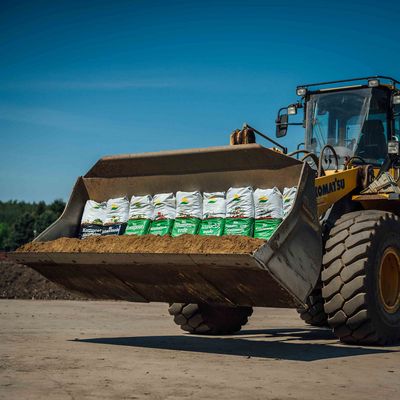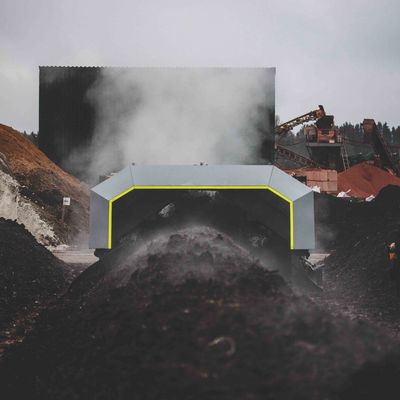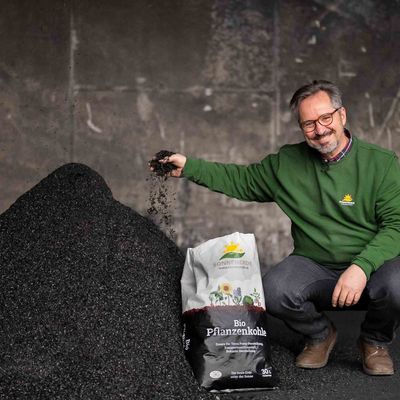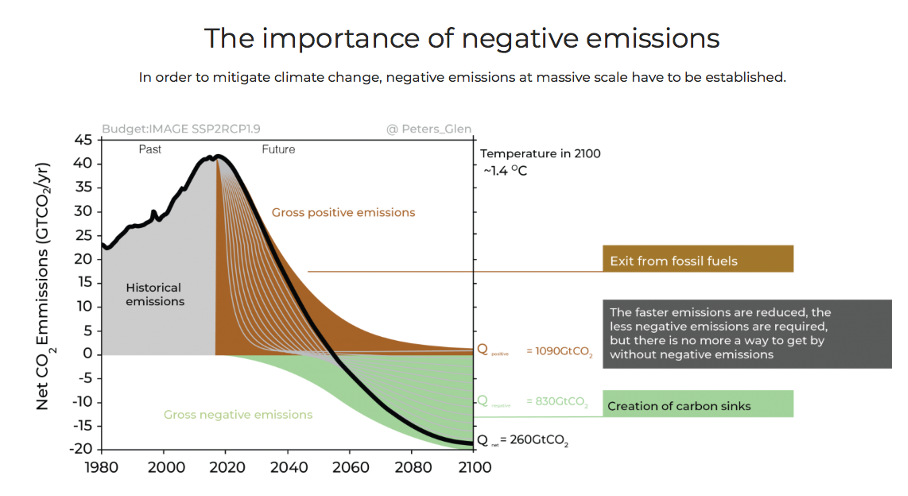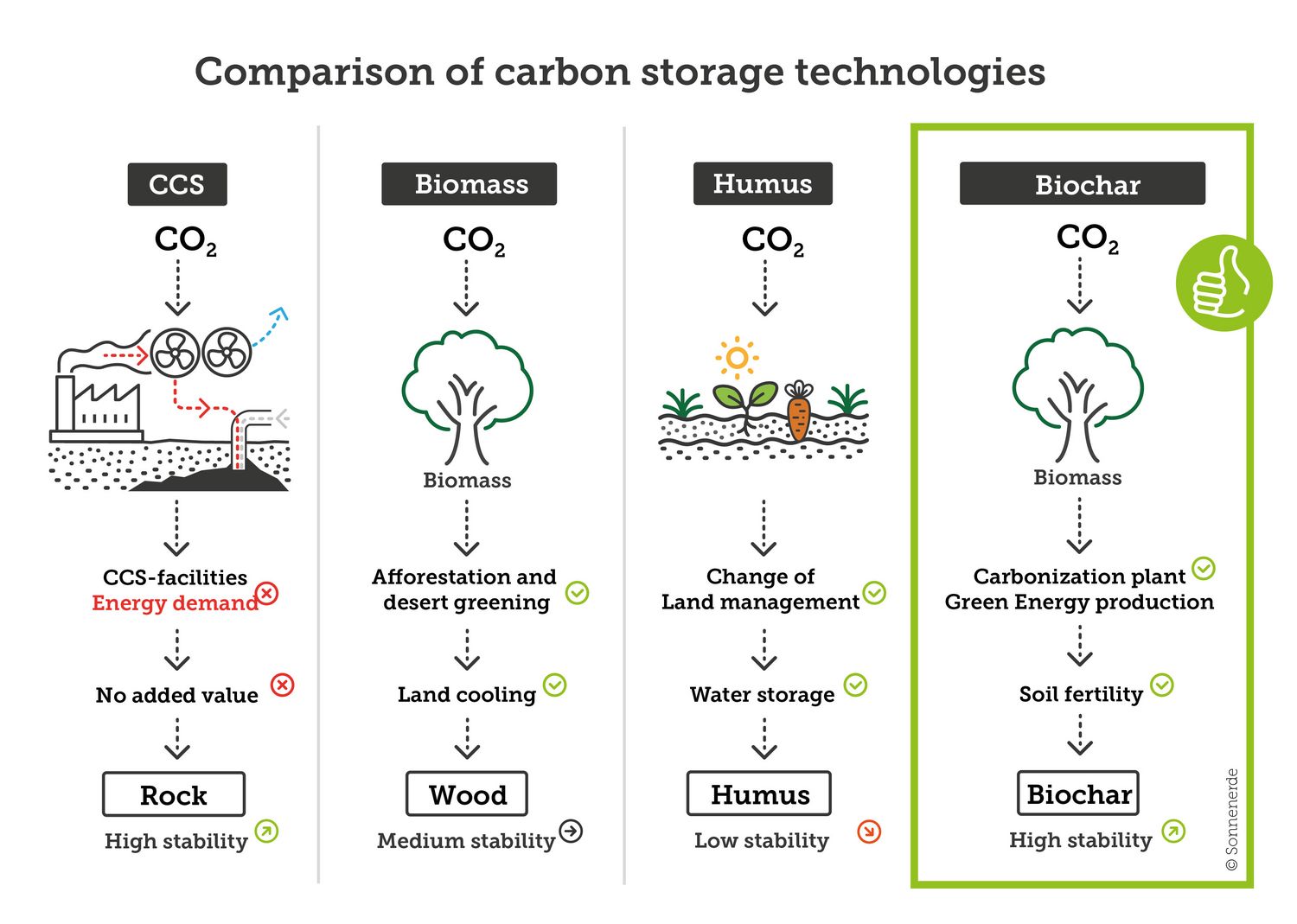The clear objective of Sonnenerde: CO2 reduction
Too much CO2 in the atmosphere
Climate change is no longer an abstract theory, but a threat to life on earth as we know it. Man-made CO2 emissions are a key factor in climate change. In order to reduce the risks and impacts of climate change, all countries around the world committed to limiting global warming to 1.5 °C above pre-industrial levels in the Paris Climate Protection Agreement. This means that greenhouse gas emissions must be radically reduced.
Even with a 100% phase-out of fossil fuels, this target of 1.5 °C can only be achieved by developing binding technologies that remove CO2 from the earth's atmosphere. This CO2 removal is also referred to as "negative emissions".
Make your company climate-neutral!

Our way at Sonnenerde to achieve our climate protection goals
1) CO2 reduction at Sonnenerde:
- All Sonnenerde products are 100% peat-free (CO2 is released when peat is cut).
- Step by step we are electrifying our machines and the employee fleet.
- Operation of a photovoltaic system.
- We pay attention to regionality in the use of raw materials and raw material disposal (saving of transport kilometers).
2) CO2 binding at Sonnenerde:
- Through composting, we bind CO2 in stable humus and use it to produce earth products.
- We create “negative emissions” by producing organic biochar through charring.
In the last 10 years, around 2,000 tons of organic biochar have been produced and around 4,000 tons of CO2 have been bound.
Historical and future CO2 emissions in an IPCC (RCP1.9) scenario in which the Paris climate target can be achieved through a combination of rigorous emission reduction and massive build-up of carbon sinks. The brown curve shows the path of emission reduction, the green curve shows the path of sink build-up. The light gray lines correspond to alternative pathways where in order to achieve the climate target an even faster reduction in emissions would result in a lower build-up of carbon sinks. In this scenario, the sink capacity must already increase to around 10 Gt CO2 in 2050.
© Peters_Glen / Whitepaper Pflanzenkohle 2020
Carbon storage technologies
The comparison of CO2 sequestration methods (graphic) shows the advantages and disadvantages of the different technologies
- CCS – i.e. the storage of concentrated CO2 in rock – has a high level of stability, but consumes a lot of energy and, above all, brings no additional benefit.
- This additional benefit would exist with the biogenic alternatives of biomass and humus (wood use and humus build-up), but the carbon stability is lower.
- The production of organic biochar, on the other hand, does not consume any energy (on the contrary: energy is generated in the process), has a very high level of stability (hundreds of years) and, above all, brings enormous additional benefits.
Biochar is THE source of hope in the fight against climate change.
Advantages of biochar as a CO2 store.
With our charring-process, we not only bind CO2, but also generate high-quality and popular products that automatically turn our customers into climate protectors. Biochar as a CO2 store has several advantages. During production, energy is generated that is used immediately. Biochar ensures excellent soil fertility and high stability.

